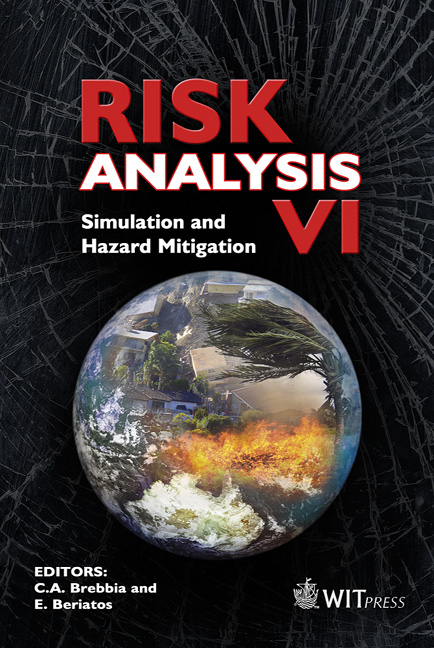Numerical Simulation Of Leaking Hydrogen Dispersion Behavior In A Partially Open Space
Price
Free (open access)
Volume
39
Pages
10
Page Range
413 - 422
Published
2008
Size
926 kb
Paper DOI
10.2495/RISK080401
Copyright
WIT Press
Author(s)
K. Matsuura, H. Kanayama, H. Tsukikawa & M. Inoue
Abstract
The numerical simulation of hydrogen dispersion in a partially open space is performed in this paper. The transient behavior of hydrogen and the process of accumulation in the space are discussed. Also, the effects of changing vent positions, vent conditions and surrounding atmospheric currents on the distribution of hydrogen concentrations are shown. Based on the results, conditions for preventing the dispersion and accumulation of hydrogen in the space, and the importance of incorporating a relationship with the outside environment in the computation, are discussed. Keywords: dispersion, computational fluid dynamics, hazard modelling, ventilation, atmospheric current. 1 Introduction Safety is recognized as one of the most important issues in promoting hydrogen utility. Accompanying its extensive usage, the possibility of accidental release is considered to increase in hydrogen infrastructure including storage, bulk transportation and distribution, production and utilization. Various safety issues from a priori to a posterior have been discussed so far, such as hydrogen embrittlement, permeation, convective leakage, ignition and explosion. In particular, research on the leaking hydrogen is important to prevent accidental ignition, and is also considered to give the safety margin for leakage. Therefore, for the safe usage of hydrogen it is necessary to predict and understand its characteristics of leakage and dispersion.
Keywords
dispersion, computational fluid dynamics, hazard modelling, ventilation, atmospheric current.





